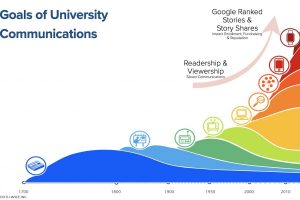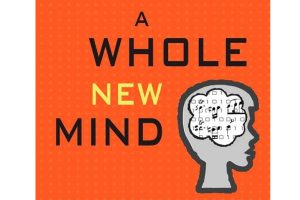
When crafting strategies for international student recruitment, we pay special attention to cultural sensitivities that may be at play. Here are three considerations to look out for when creating culturally sensitive communications.


When crafting strategies for international student recruitment, we pay special attention to cultural sensitivities that may be at play. Here are three considerations to look out for when creating culturally sensitive communications.

Few higher education leaders have seized the opportunity before them. Most remain in a promotion rather than a publishing mindset. And while they work tirelessly to produce content, few understand the steps to make it “productive.”

Third in a three-part blog series on a concept that the author R. Todd Erkel calls “the battle for meaning.” We will look at the evolution of higher education marketing and its relationship to code, content, Google’s algorithm, and page one organic search results. The Battle for Meaning in the Age of Name-Image-Likeness Once upon […]

Three examples of companies, their special cause marketing initiatives, and keyword phrases pivotal for winning their battles for meaning.

This three-part blog series considers how companies and cause marketing can mature beyond nourishing brand loyalty and secure keyword phrases linked to bedrock principles.

Communicating before, during and after a capital campaign requires the kind of symphonic thinking that author Daniel Pink explores in A Whole New Mind: Moving from the Information Age to the Conceptual Age. Strategic visions and campaign priorities can quickly deconstruct into campaign inventory and itemization — losing all connection to a larger and more […]

A familiar Chinese proverb instructs: “To know the road ahead, ask those coming back.” The current situation in higher education defies that enduring wisdom. Change arrived suddenly, with little regard for institutional history or might. In this respect, all colleges stand on relatively common ground. All college presidents, to a degree, have become new college presidents. […]

Like every market, the audience of college-bound high school seniors is responding to change and uncertainty with… more change and uncertainty. Very recent surveys show roughly a quarter of next year’s class feeling uncertain about whether they will attend their first choice college, attend a school closer to home, or delay college enrollment for a […]

As a newly selected college president, you may view your pending move in traditional terms — relocating to a new city, occupying a new office or executive residence and joining a new campus culture. You’re also inheriting a .edu web address that can help accelerate or impede your best laid presidential plans. Here’s a field […]

College marketing and communications teams increasingly look to boost video teams and budgets. All well and good, but we should not overlook the enduring value and impact of your still image library. It’s easy to grow complacent and assume that last year’s photos will meet this year’s needs. It’s tempting to hire less qualified photographers, […]